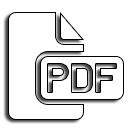Memahami Konsep Oikos dalam Perjanjian Baru dan Dialognya dengan Nilai Pendirian Rumah Bagi Orang Banjar
(SUATU KAJIAN BIBLIS-KULTURAL)
DOI:
https://doi.org/10.59002/jtp.v4i1.100Keywords:
Banjarmasin people, pembangunan rumah, theological values, ecological valuesAbstract
This research, which was conducted in March-June 2024 in the city of Banjarmasin, wanted to highlight the meaning of house building for the Banjar people. This research is descriptive in nature and uses critical historical methods on Matthew 7:24-27 to find principles and values that can be dialogued between the biblical and the cultural in terms of building of Banjar houses. Traditionally it is understood that for Banjar people, it does not just function as a place to live because determining the location, selecting building materials, dividing rooms and measuring the building is detailed in detail by considering spiritual and ecological values. Research using theological-cultural studies which combines the theory of historical analysis of texts with a cultural approach, found several research results, namely: first, the foundation has the meaning of life; second, the type of house reflects social strata; third, religious values are the foundation of the house and fourth, ecological values in understanding the house.
References
A. F. J. Klijn. (1980). An Introduction To The New Testament. E. J. Brill.
Barclay, W. (2003). Pemahaman Alkitab Setiap Hari: Injil Matius Pasal 1-10, terj. The Daily Bible Study: The Gospel of Mattew Volume I, diterjemahkan oleh S. Wismoady. BPK Gunung Mulia.
Barclay, W. (2008). Pemahaman Alkitab Setiap Hari: Surat Ibrani, terj. The Daily Bible Study: A Letter Of Hebrew, diterjemahkan oleh S. Wismoady Wahono. BPK Gunung Mulia.
Harisuddin, A. (n.d.). Urang Banjar: Asal Usul dan Identitasnya [Artikel pada Universitas Islam Negeri Banjarmasin]. https://osf.io/h95av/download
Heer, J. J. De. (2013). Tafsiran Alkitab: Injil Matius Pasal 1-22. BPK Gunung Mulia.
Imadduddin Parhani. (2016). Perubahan Nilai Budaya Urang Banjar (Dalam Perspektif Teori Troompenaar). Al-Banjari, 15(1).
Jeremias, J. (1962). The Parables Of Jesus (Second Edi). Charles Scribner’s Sons.
Lantigimo, E. M., Ripaldi, & Afriliani, L. (2023). Abah Guru Sekumpul. Jurnal Teologi Pambelum, 3(1), 70–87. https://doi.org/10.59002/jtp.v3i1.59
Nurfansyah, N., Saud, M. I., Wastuti, P. W., Aini, A. Q., & Agusniansyah, N. (2020). Perkembangan Pondasi Tiang Kayu Pada Rumah Tinggal Di Banjarmasin. INFO-TEKNIK, 21(2), 199. https://doi.org/10.20527/infotek.v21i2.10173
Rasmussen, L. L. (2010). Komunitas Bumi: Etika Bumi- Merawat Bumi Demi Kehidupan Yang Berkelanjutan Bagi Segenap Ciptaan, terj. Earth Community Earth Ethics, diterjemahkan oleh Liem Sien Kie. BPK Gunung Mulia.
Sahriansyah. (2015). Sejarah Kesultanan dan Budaya Banjar. IAIN Antasari Press.
Sanon Dan Sudianto. (2019). Pedoman Penulisan Karya Ilmiah: Makalah, Laporan, Proposal Skripsi, Skripsi, Proposal Tesis, Tesis. Unit Publikasi Informasi STT GKE.
Sudianto, S., Maleh, K., & Ripaldi. (2024). Dialog Nilai Mira Pakat Dayak Ma’anyan Di Banjarmasin Dengan Teks Filipi 2:1-7. Jurnal Teologi Pambelum, 3(2), 97–110. https://doi.org/10.59002/jtp.v3i2.69
Sugiyono. (2016). Metode Penelitian Manajemen. Alfabeta
Syamsiar Seman. (1982). Rumah Adat Banjar. Departemen Pendidikan dan Kebudayaan Proyek Penerbitan Buku Sastra Indonesia dan Daerah.
Syamsiar Seman. (2000). Rumah-Rumah Adat Banjar Bahari. Museum Negeri Fropkalsel Lambung Mangkurat.
Tim Penyusun. (2008). Pedoman Penafsiran Injil Matius, Terjemahan A Translator’s Handbook on the Gospel of Mattew. Lembaga Alkitab Indonesia.
Werner Georg Kummel. (1965). Introduction Of The New Testament, diterjemahkan dari Einleitung in das Neue Testament. SCM Press LTD.
Downloads
Published
How to Cite
Issue
Section
License
Copyright (c) 2024 May Linda Sari, Ripaldi, Endy

This work is licensed under a Creative Commons Attribution 4.0 International License.













